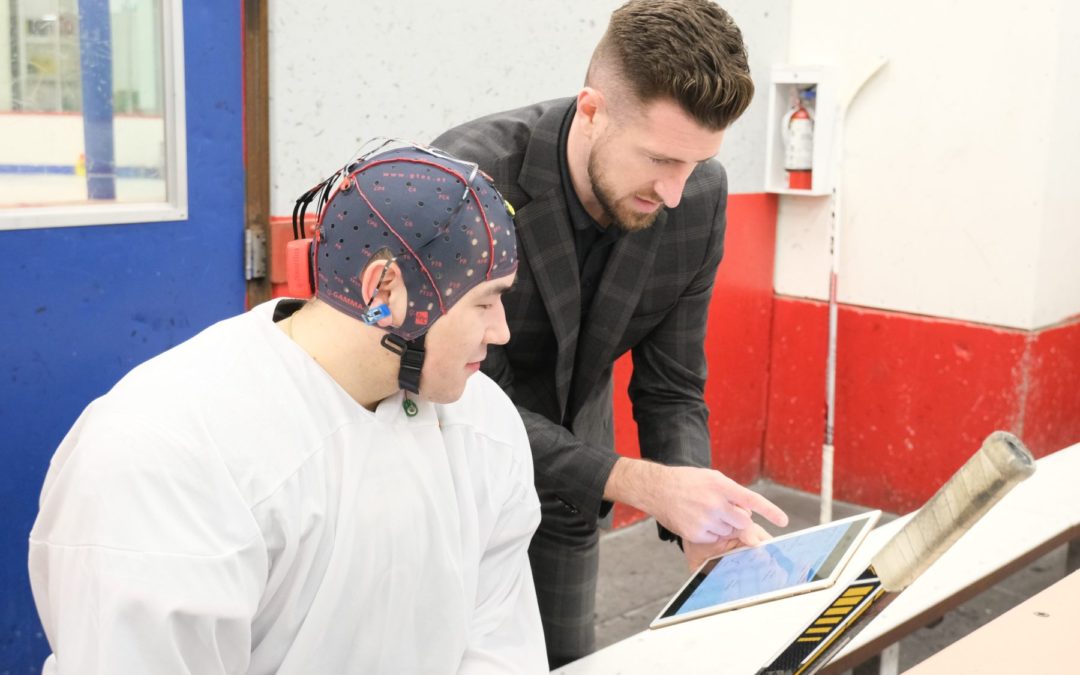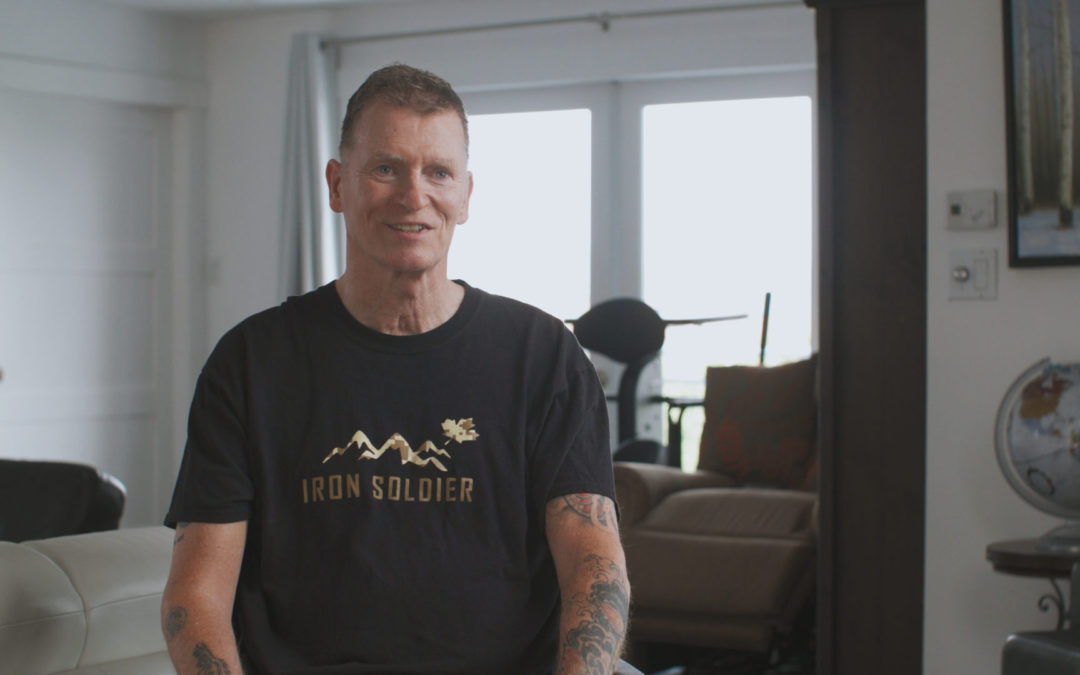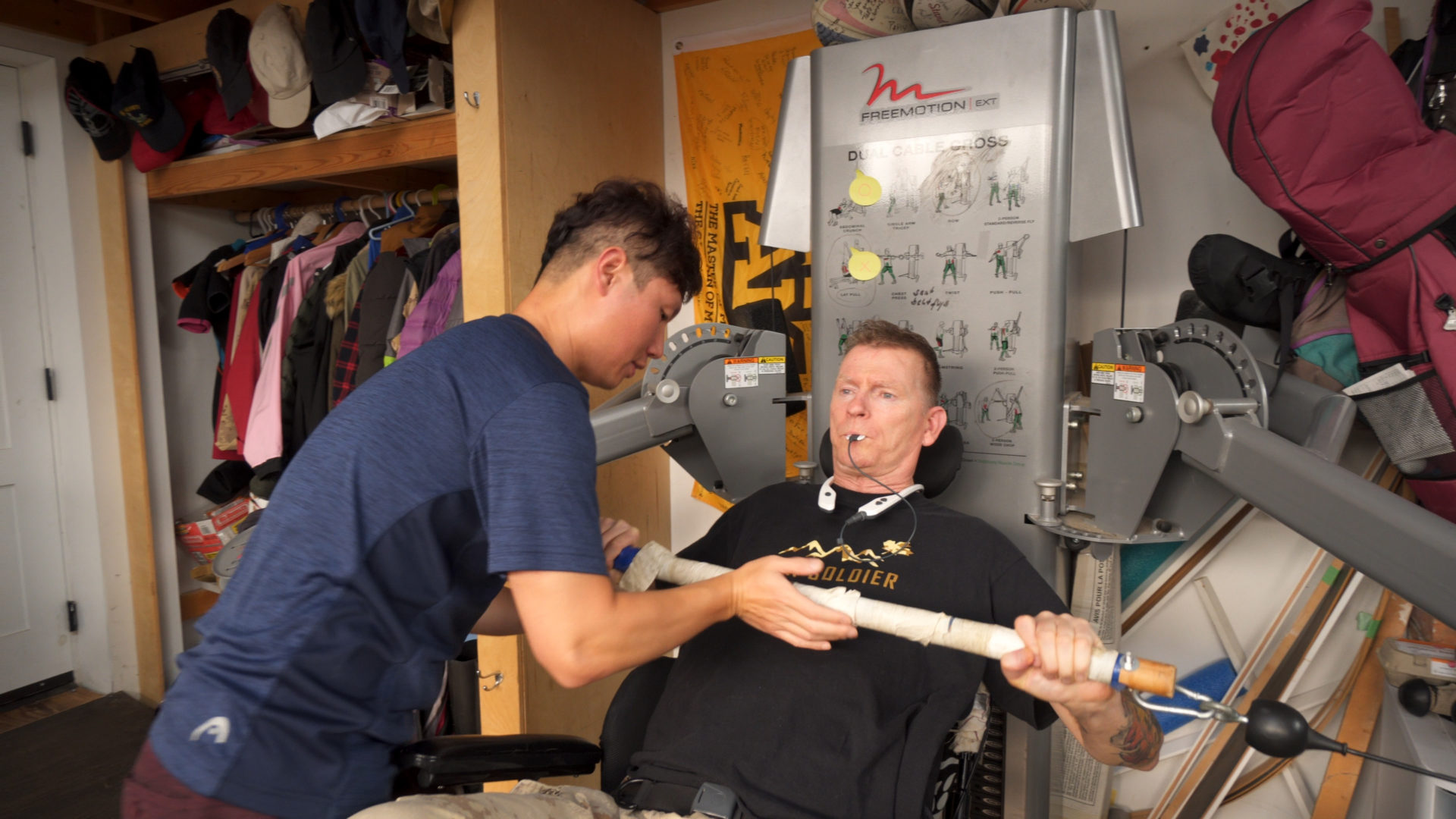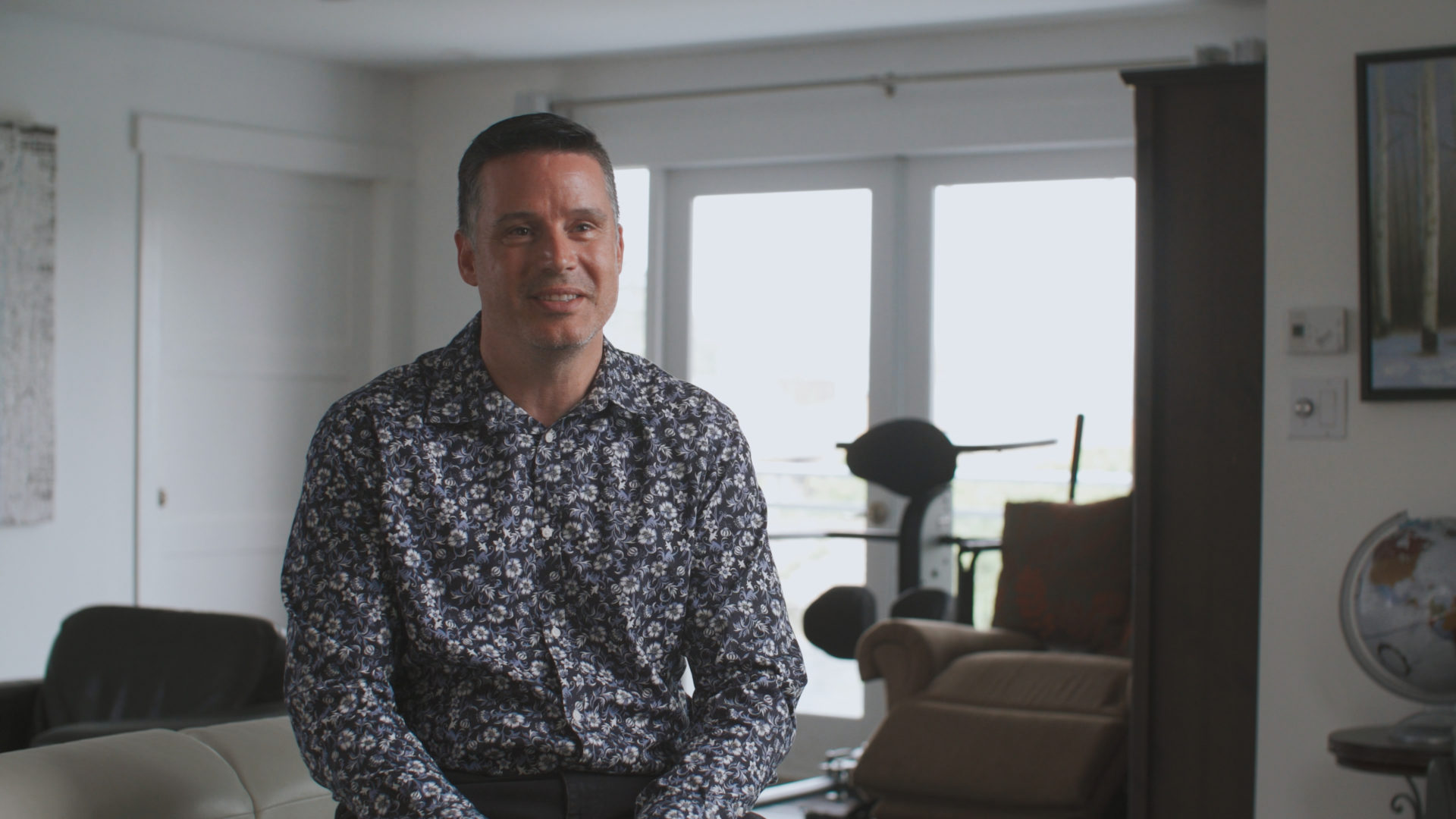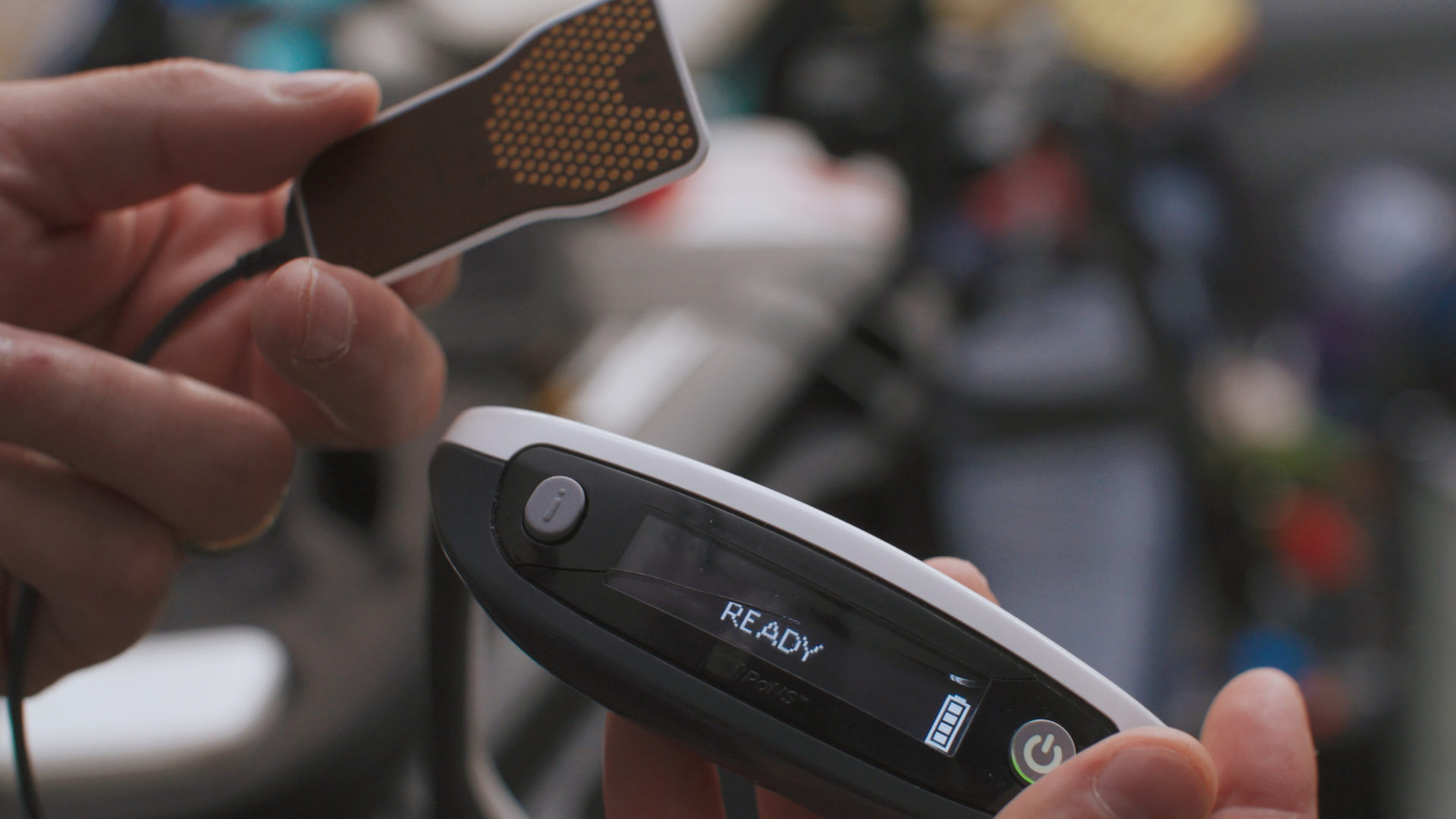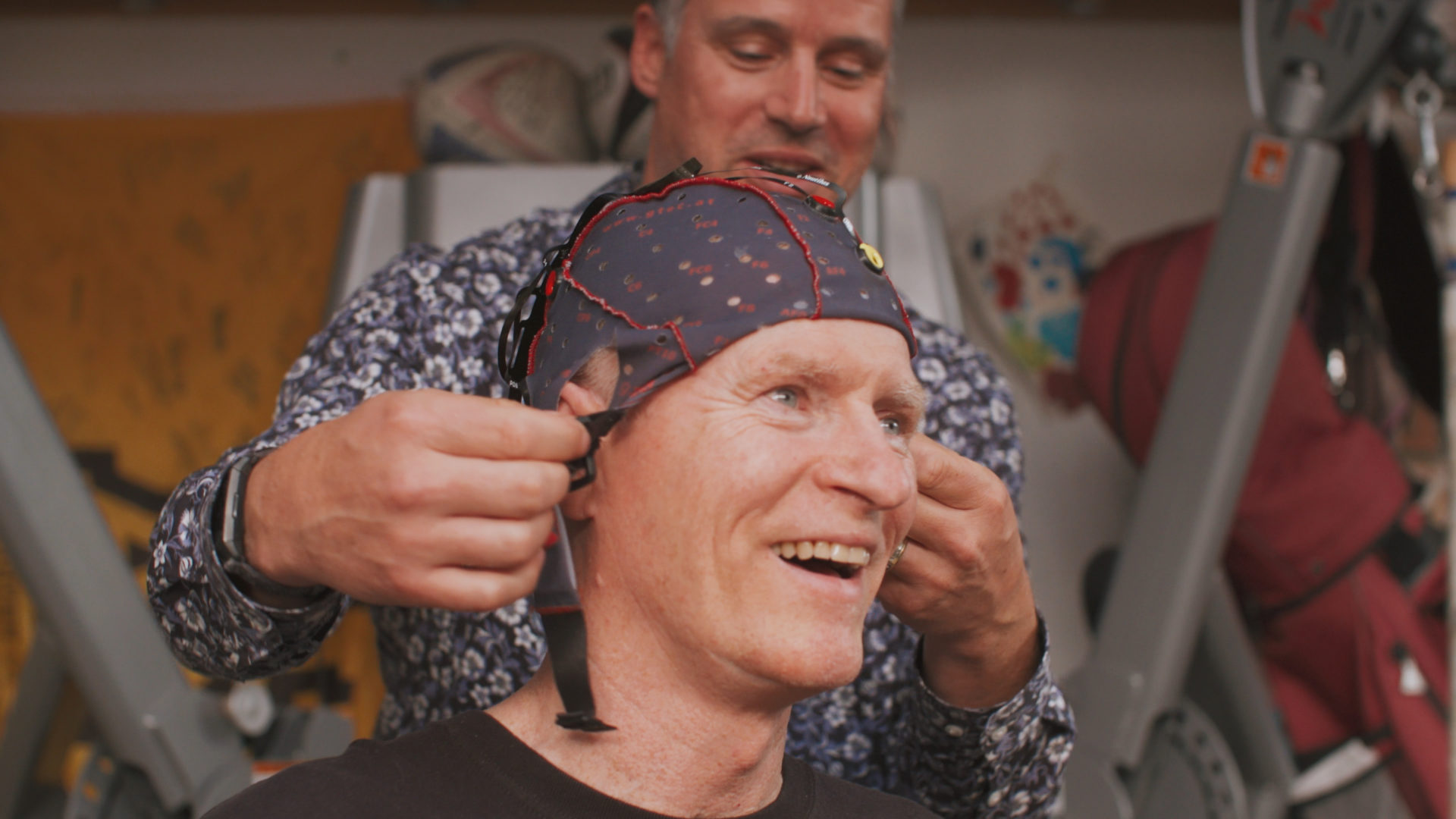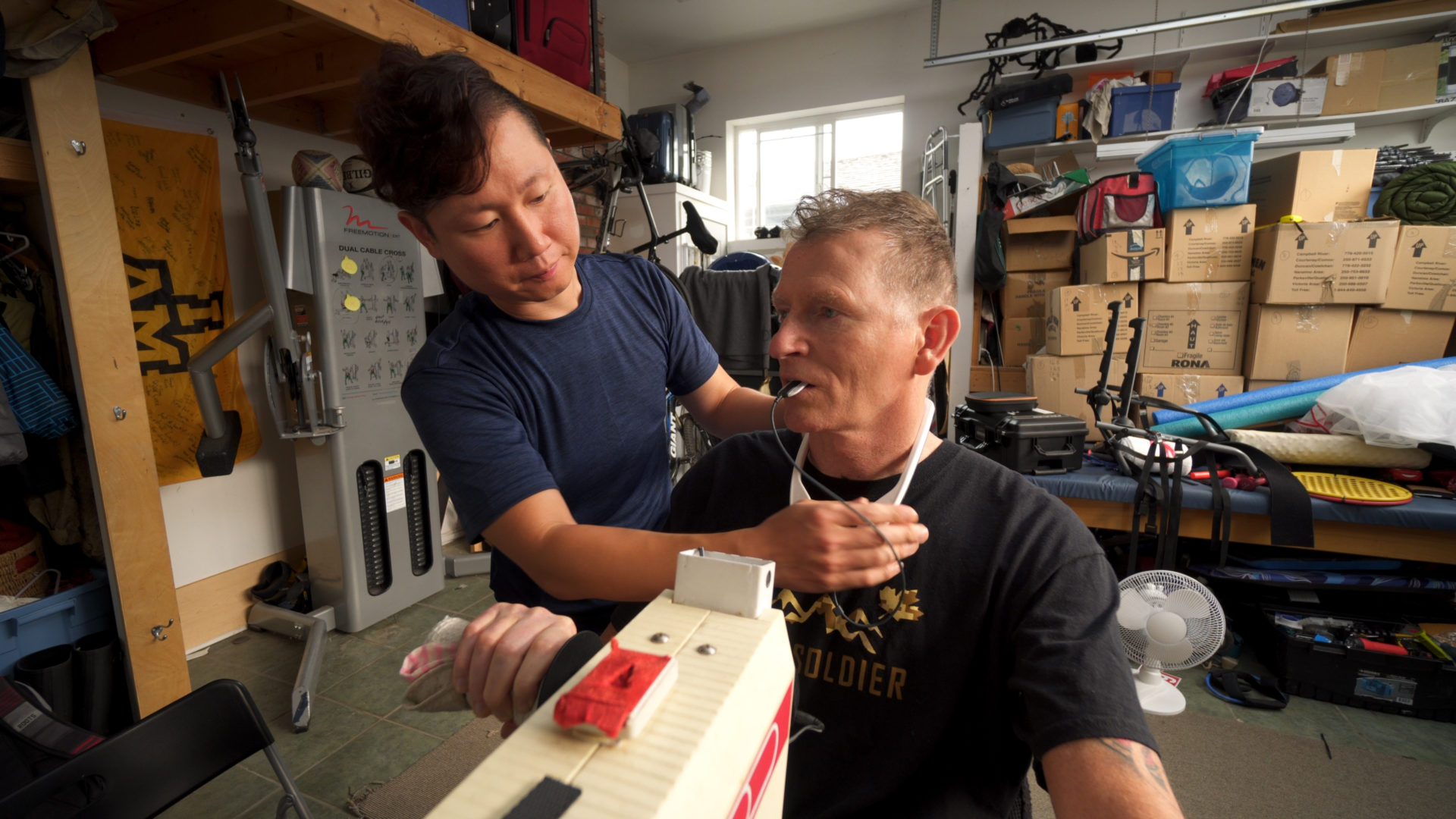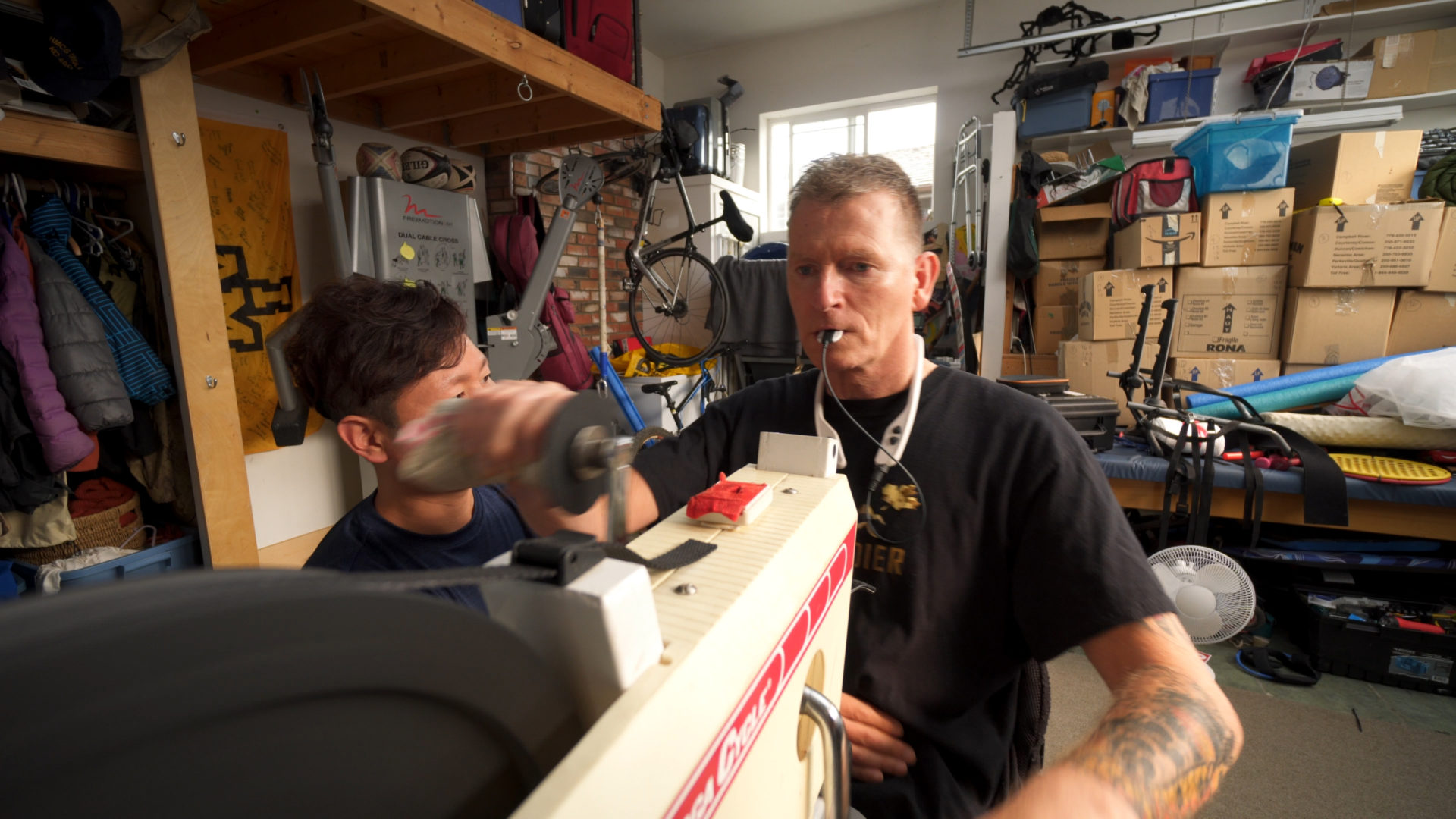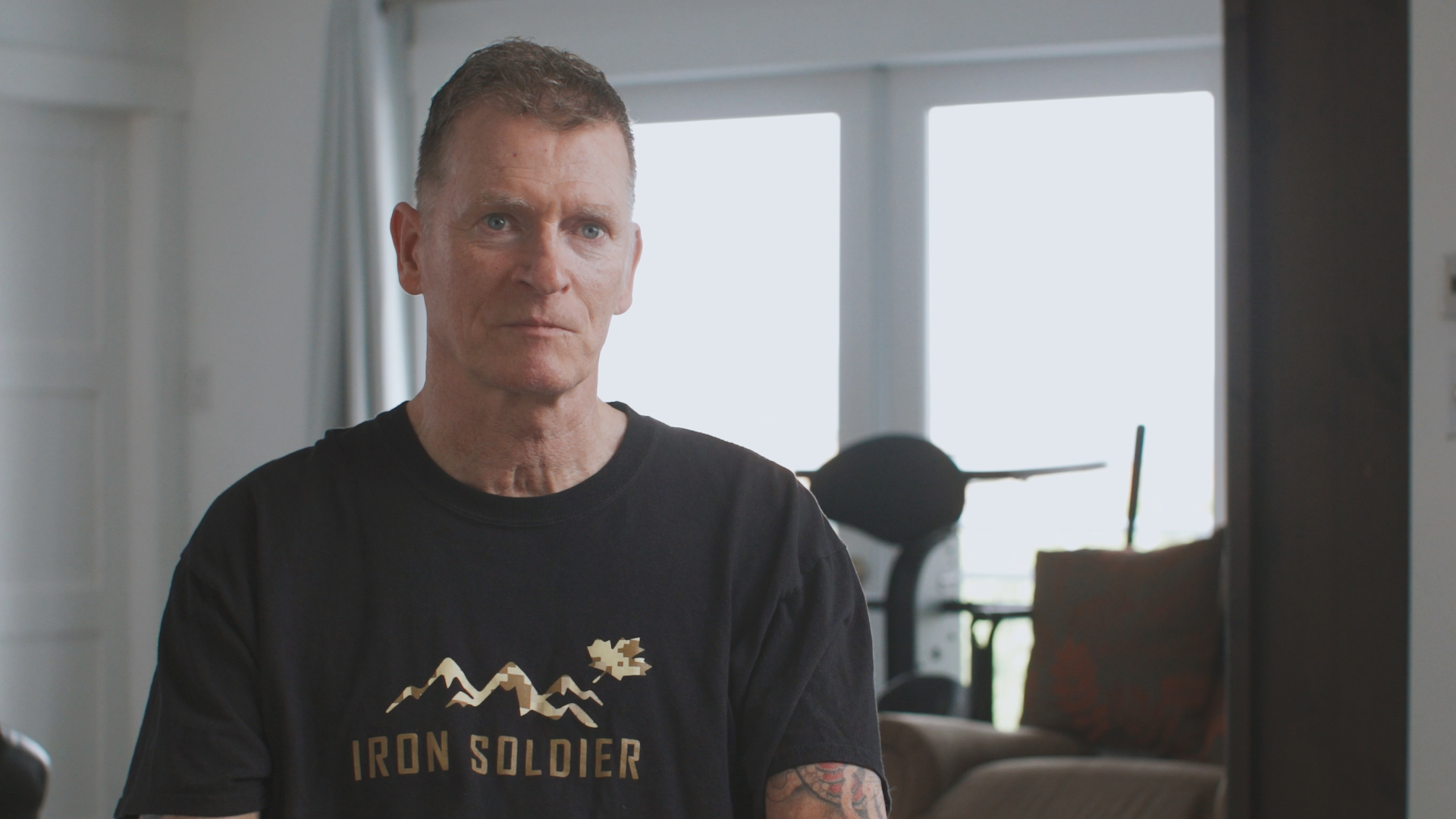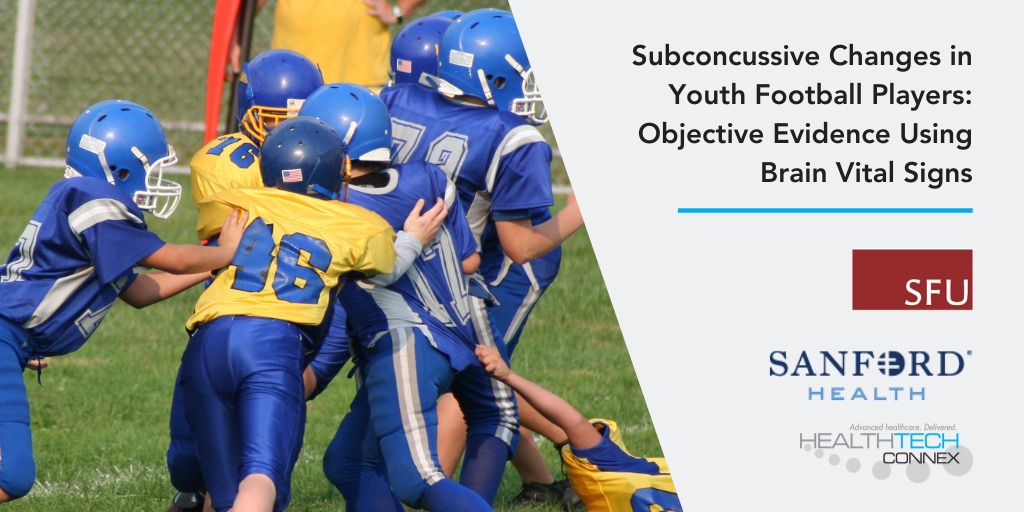
Cognitive Brain Function in Youth Football Players Can be Impaired by Repetitive “Subconcussive” Head Impacts
Brain health study shows cognitive brain function in youth football players can be impaired by repetitive “subconcussive” head impacts
(See this news release on EurekAlert and Medical Xpress.)
Sioux Falls, South Dakota, U.S. and Surrey, British Columbia, Canada (February 23, 2022) – Neuroscience researchers at Sanford Research in Sioux Falls, South Dakota, U.S., Simon Fraser University (SFU), and HealthTech Connex Inc. located at the Health and Technology District in Surrey, British Columbia, Canada, have published the latest results of their ongoing multi-year football study examining subconcussive changes in cognitive brain function in male youth football players.
The findings were recently published in the peer-reviewed journal Brain Communications in the advanced articles section, titled: “Subconcussive changes in youth football players: Objective evidence using brain vital signs and instrumented accelerometers.”
The research team monitored the brain vital signs of 15 male youth football players (age 14 or under) in Sioux Falls, South Dakota, during pre- and post-season play who did not sustain a concussion diagnosis during the season.
“Brain vital signs” translates complex brain waves measured using portable electroencephalography (EEG) into simple, fast, user-friendly and intuitive results that provide an objective evaluation of cognitive brain function. Called the ABCs of brain function, brain vital signs track three well-established neural responses for Auditory sensation (using a response called the N100), Basic attention (using a response called the P300), and Cognitive processing (using a response called the N400).
The study examined this group of male youth football players and reported cognitive processing sensitivity (N400) to subconcussive impairments in those players who did not sustain a concussion diagnosis over the course of the season. In addition, changes in brain vital signs were highly related to the number of head impacts that the players were exposed to during the season.
This youth football study replicated and built on previous Junior-A and Bantam youth ice hockey concussion and subconcussion study results published in Brain: A Journal of Neurology and Brain Communications which resulted in the same findings, confirming significant brain vitals sign changes and concussive/subconcussive impairments in youth contact sport that went undetected using current clinical concussion protocols.
A subconcussive impact is a mechanical force transmitted to the brain below the threshold for a diagnosis of an acute concussive injury. The effects of these low-magnitude impacts may not even be noticeable to the player or to observers on the sideline.
“By monitoring brain vital signs, extracted from complex brain waves measured using portable electroencephalography (EEG), it was possible for us to track three well-established neural responses for auditory sensation, basic attention, and cognitive processing in these youth football players,” says Dr. Thayne Munce, the study’s principal investigator and Assistant Scientist in the Environmental Influences on Health and Disease Group at Sanford Research. “The results of the study show that repetitive subconcussive impacts triggered compounding effects in brain function changes over time. While more research needs to be done in this area, this is the first step in how we can look at youth contact sports in the future.”
The results of this youth football Brain Communications study showed:
- Significant brain vital sign changes in pre-to-post season cognitive processing speed.
- A significant relationship between the subconcussive brain vital sign changes and head impact exposures as measured by the total number of head impacts as well as number of games and/or practices over the season.
- The authors noted that the brain vital sign changes and total number of head impacts for the football players closely related with the results from older, Junior-A, ice hockey players from a previous study.
Canadian collaborators include neuroscientist Dr. Shaun Fickling, lead R&D scientist at HealthTech Connex Inc., SFU PhD graduate and lead author of the study, as well as Dr. Ryan C. N. D’Arcy, an SFU professor and co-founder of HealthTech Connex Inc. and the Health and Technology District in Surrey B.C. HealthTech Connex Inc. is a health technology company developing the NeuroCatch® Platform.
“These findings provide further support that there is a predictive relationship between head impact exposure in contact sport and subtle changes in cognitive brain function” reports Dr. Shaun Fickling, who was the study’s lead author as part of his PhD in Biomedical Engineering at Simon Fraser University.
“The results are really quite positive and optimistic for the future of brain injury prevention and management in sport,” further explains Dr. Thayne Munce. “Now that we can sensitively detect changes associated with subconcussive impacts, it is possible to identify the leading ways to prevent, treat, and manage possible impairments, which is a critical step that is now getting underway.”
The US-Canadian concussion research collaborators are continuing to utilize these brain vital sign advances to evaluate possible leading innovations in prevention and treatment.
The research study was designed and carried out by investigators at Sanford Research, and partially supported by a grant from the T. Denny Sanford Pediatric Collaborative Research Fund. This project was also supported in part by the Simon Fraser University Graduate International Travel and Research Award (GIRTA).
About Sanford Health:
Sanford Health, one of the largest health systems in the United States, is dedicated to the integrated delivery of health care, genomic medicine, senior care and services, global clinics, research and affordable insurance. Headquartered in Sioux Falls, South Dakota, the organization includes 46 hospitals, 1,500 physicians and more than 200 Good Samaritan Society senior care locations in 26 states and 10 countries. Learn more about Sanford Health’s transformative work to improve the human condition at sanfordhealth.org or Sanford Health News.
About Simon Fraser University (SFU):
As Canada’s engaged university, SFU works with communities, organizations and partners to create, share and embrace knowledge that improves life and generates real change. We deliver a world-class education with lifelong value that shapes change-makers, visionaries and problem-solvers. We connect research and innovation to entrepreneurship and industry to deliver sustainable, relevant solutions to today’s problems. With campuses in British Columbia’s three largest cities—Vancouver, Burnaby and Surrey—SFU has eight faculties that deliver 193 undergraduate degree programs and 127 graduate degree programs to more than 37,000 students. The university now boasts more than 165,000 alumni residing in 143 countries. www.sfu.ca
About HealthTech Connex Inc.:
Located in the Health and Technology District, HealthTech Connex Inc. (HTC) is a brain technology company focusing on cutting-edge innovations and services for rapid impact on health improvements and outcomes in neurological performance. With brain vitality as a premier focus, HealthTech Connex provides translational neuroscience innovations to care and community sectors worldwide, bridging the gap between what is capable in the laboratory and what’s available in the real world. www.healthtechconnex.com
-30-
Media contact:
Yvonne Chiang, news@chiangpr.ca

